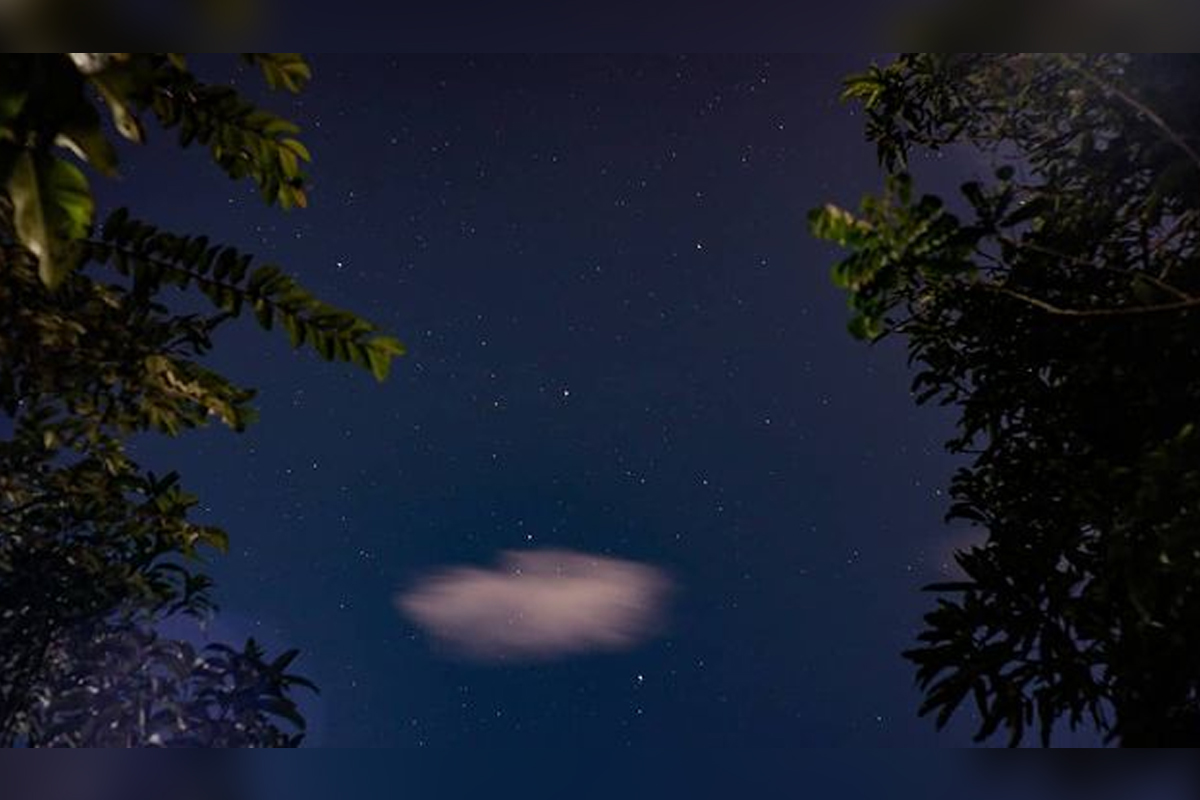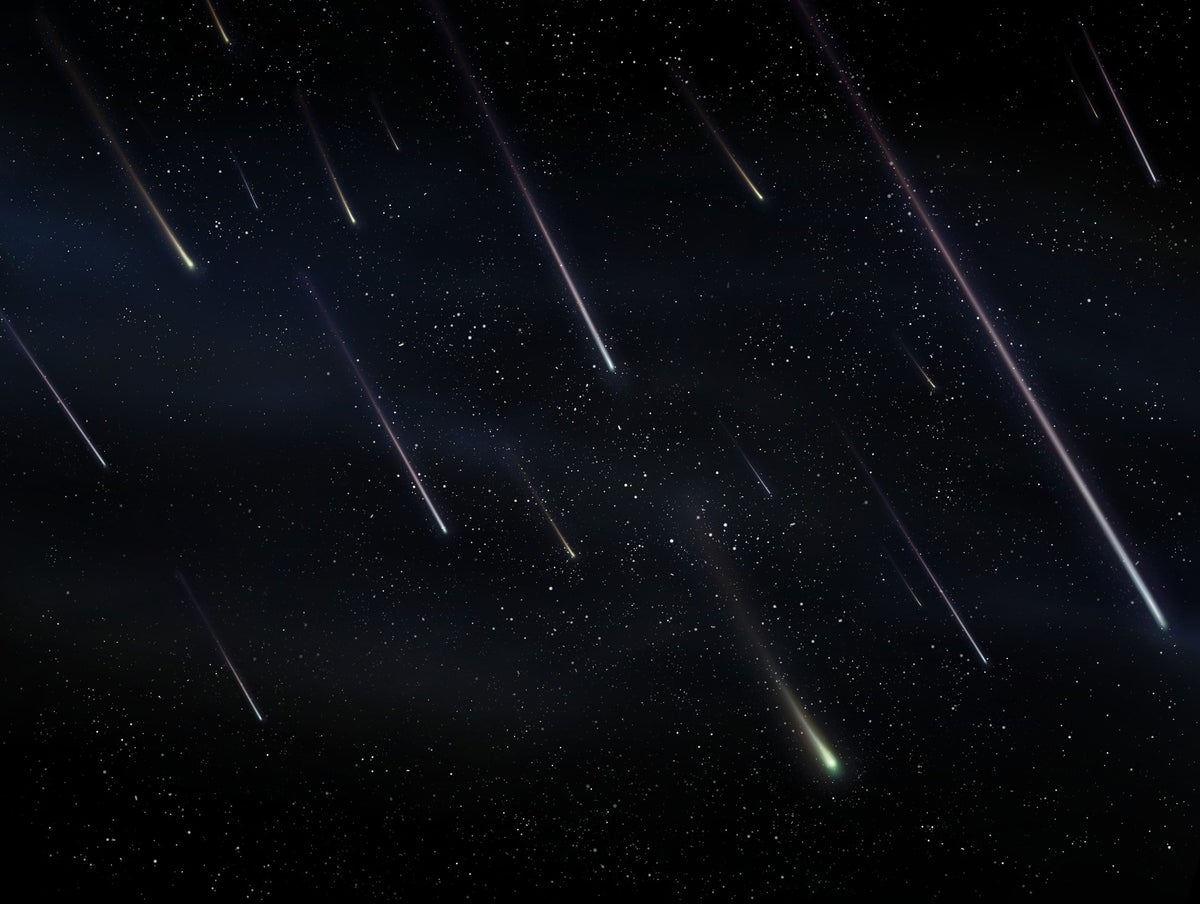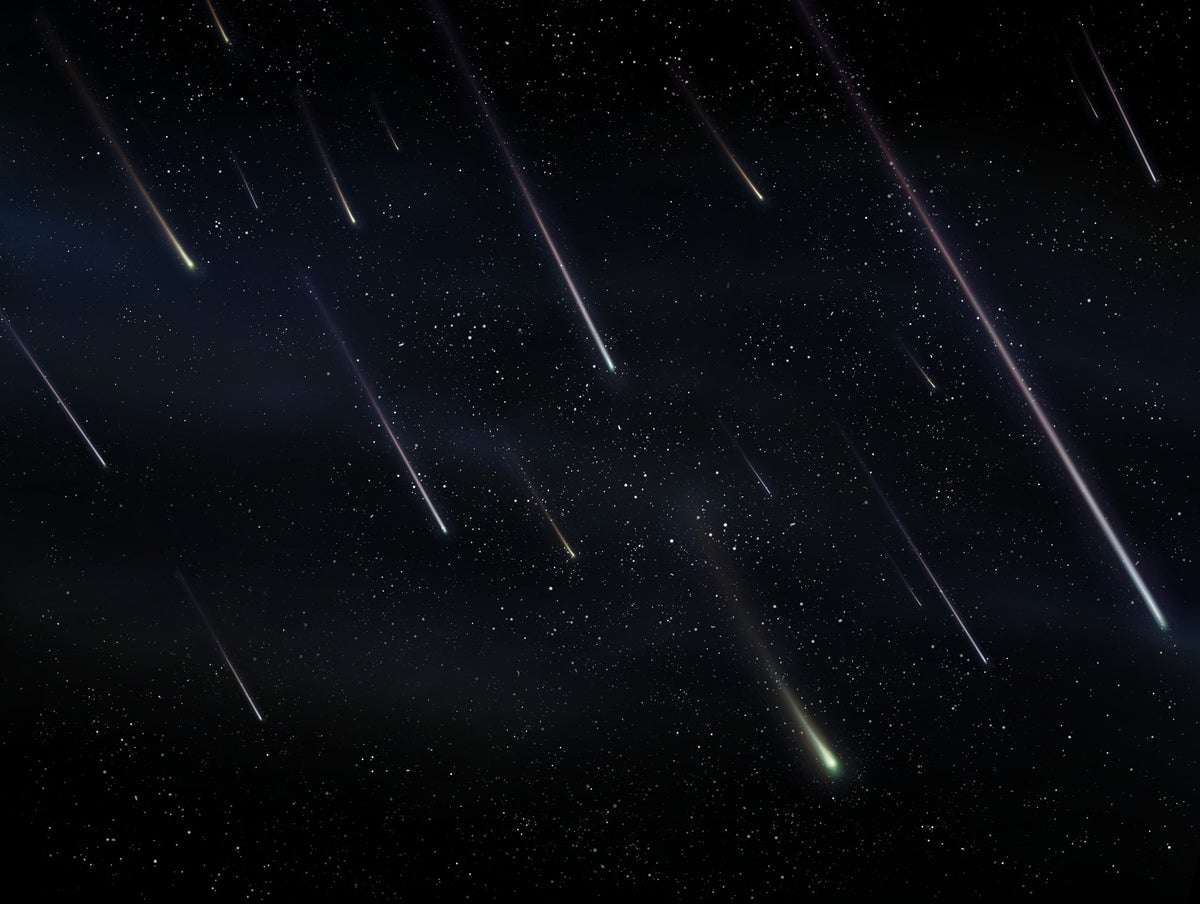Quadrantid meteor shower to light up skies – here’s the best way to witness this celestial spectacle! This year’s Quadrantid meteor shower promises a dazzling display, but knowing when and where to look is key. We’ll cover optimal viewing times, locations worldwide, equipment tips, and even photography techniques to capture the magic. Get ready for a breathtaking show!
From understanding the shower’s origin and radiant point in the constellation Boötes to maximizing your viewing experience with simple tips and tricks, this guide will equip you to fully appreciate the beauty of the Quadrantids. We’ll also explore how factors like moon phase and light pollution can impact visibility, helping you choose the perfect viewing spot and time.
Peak Viewing Times and Locations
The Quadrantid meteor shower, known for its bright and fast meteors, offers a spectacular celestial display. Optimizing your viewing experience requires understanding the peak viewing times specific to your location and considering factors like light pollution and weather. The moon’s phase also plays a crucial role in visibility.
Optimal Viewing Times by Location
The following table provides estimated peak viewing times for several locations, considering local time and Coordinated Universal Time (UTC). Note that these are estimates, and actual peak times may vary slightly. Viewing conditions are subject to weather patterns and are therefore approximate.
| Location | Peak Time (Local) | Peak Time (UTC) | Viewing Conditions (Example) |
|---|---|---|---|
| New York City, USA | 3:00 AM – 4:00 AM January 4 | 7:00 AM – 8:00 AM January 4 | Partly Cloudy |
| London, UK | 4:00 AM – 5:00 AM January 4 | 4:00 AM – 5:00 AM January 4 | Clear |
| Tokyo, Japan | 1:00 PM – 2:00 PM January 4 | 4:00 AM – 5:00 AM January 4 | Cloudy |
| Sydney, Australia | 5:00 PM – 6:00 PM January 4 | 7:00 AM – 8:00 AM January 4 | Clear |
Best Viewing Locations Worldwide
For optimal viewing, seek locations far from city lights. Dark sky parks and rural areas offer the best chances to witness the shower’s full brilliance. Areas with minimal light pollution and generally clear winter skies are ideal. Weather forecasts should be checked closely before embarking on a viewing trip.
Examples of excellent locations include remote areas in the western United States, parts of Canada, the Atacama Desert in Chile, and various dark sky reserves in Australia and New Zealand. These locations boast minimal light pollution and often experience favorable weather conditions during the winter months.
Want to catch the Quadrantid meteor shower? Find a dark spot away from city lights for the best view! While you’re gazing upwards, you might also want to check out this article about a concerning health issue: Viral disease HMPV is on the rise among kids in China — what is it? Then, get back to enjoying that amazing meteor shower – bundle up warm and prepare to be amazed!
Impact of Moon Phase on Visibility
The moon’s phase significantly impacts meteor shower visibility. A bright full moon can wash out fainter meteors, reducing the number you can see. A new moon, or a crescent moon, provides much darker skies, allowing for observation of more meteors. For the Quadrantids in 2024, the moon phase will need to be checked closer to the date to determine its impact on viewing conditions.
A nearly new moon will enhance the viewing experience considerably.
Observing the Shower: Equipment and Techniques: Quadrantid Meteor Shower To Light Up Skies – Here’s The Best Way To

Preparing for meteor shower viewing involves selecting the right location, gathering necessary equipment, and understanding the techniques for maximizing your observation experience. Proper preparation can significantly enhance the enjoyment of this celestial event.
Preparing for Meteor Shower Viewing
- Choose a Viewing Location: Select a dark location away from city lights. Rural areas, dark sky parks, or even your backyard (if sufficiently dark) are good choices.
- Gather Equipment: Bring a comfortable chair or blanket, warm clothing (even in mild climates, nights can get cold), and a red-light flashlight (to preserve your night vision).
- Find the Radiant Point: Use a stargazing app (like Stellarium or SkySafari) or a star chart to locate the constellation Boötes, the radiant point of the Quadrantids. Meteors will appear to originate from this point.
- Allow for Dark Adaptation: Give your eyes at least 20-30 minutes to adjust to the darkness. Avoid looking at bright lights during this time.
Enhancing the Viewing Experience

While not strictly necessary, binoculars or telescopes can add to the experience. However, they have limitations. Binoculars offer a wider field of view, but you may miss fainter meteors because of their limited field of vision. Telescopes provide magnification but severely restrict the viewing area, making it harder to spot meteors.
Want to catch the Quadrantid meteor shower? Find a dark spot away from city lights for the best view. While you’re waiting, maybe check out what happened to Wayne Mardle; I saw he was missing from commentary recently – What happened to Wayne Mardle as commentator missing from – and it’s got people talking! Anyway, back to the meteor shower; bring a blanket and some hot chocolate to make it a truly memorable night.
Tips for Maximizing Meteor Shower Viewing
- Find a dark location with a wide-open view of the sky.
- Bring a friend or family member to share the experience.
- Be patient; meteor showers are a waiting game.
- Dress warmly and comfortably.
- Bring snacks and drinks.
Understanding the Quadrantid Meteor Shower
The Quadrantid meteor shower is a unique celestial event with a fascinating origin and distinct characteristics. Understanding its source, activity, and meteor properties allows for a more informed and appreciated viewing experience.
Origin and Parent Body
Unlike most meteor showers that originate from comets, the Quadrantids’ parent body is believed to be an asteroid, designated 2003 EH1. This asteroid is thought to be the remnant of a larger object that broke apart long ago, scattering debris along its orbital path. Earth passes through this debris field annually, resulting in the meteor shower.
Comparison with Other Meteor Showers
The Quadrantids are known for their relatively short peak, typically lasting only a few hours. Compared to showers like the Perseids or Geminids, which have longer peak periods, this makes timing crucial for optimal viewing. The Quadrantids, however, often boast high meteor rates during their peak, with rates exceeding 100 meteors per hour under ideal conditions.
Characteristics of Quadrantid Meteors
Quadrantid meteors are often described as bright and fast, with some exhibiting persistent trains (glowing trails that remain visible for a short time after the meteor passes). Their colors can vary, with some appearing yellowish or bluish-white. Their speed is relatively high, contributing to their bright appearance.
The Constellation Boötes
The radiant point of the Quadrantid meteor shower lies within the constellation Boötes, a prominent constellation in the northern hemisphere. Boötes is easily identifiable by its distinctive arc of stars, culminating in the bright star Arcturus. Finding Boötes in the night sky is a good starting point for observing the meteor shower, as meteors will appear to radiate outward from this point.
Photography and Visual Documentation
Capturing the beauty of a meteor shower through photography requires specific techniques and equipment. Understanding camera settings and different photographic approaches can help you create stunning images of this celestial event. Proper preparation and attention to detail are key to successful astrophotography.
Photographing the Meteor Shower
To photograph the meteor shower, you’ll need a camera capable of long exposures, a wide-angle lens, and a sturdy tripod. Experiment with different settings: a high ISO (e.g., 1600-3200), a wide aperture (e.g., f/2.8 or wider), and a long exposure time (e.g., 15-30 seconds). A remote shutter release is highly recommended to avoid camera shake.
Comparing Photographic Approaches
| Approach | Advantages | Disadvantages |
|---|---|---|
| Long Exposure | Captures bright meteors and details in the night sky. | Requires a very stable tripod; meteors might be blurry if not perfectly timed. |
| Time-Lapse | Records a sequence of images, capturing multiple meteors over time. | Requires post-processing to combine the images; might require specialized software. |
Tips for Composing Visually Appealing Images

Include foreground elements like trees or mountains to add depth and context to your images. A well-composed image can significantly enhance the visual impact of your meteor shower photography. Experiment with different compositions, focusing on balancing the celestial display with interesting terrestrial elements.
Capturing the Best Possible Images
A stable tripod is essential to avoid blurry images. Noise reduction techniques, both in-camera and during post-processing, can help improve the quality of your photos. Practice beforehand to optimize your camera settings and get comfortable with the techniques.
Safety and Precautions
While observing a meteor shower is a rewarding experience, it’s crucial to prioritize safety and responsible stargazing practices. Being prepared for various scenarios and taking necessary precautions ensures a safe and enjoyable viewing experience.
Safety Precautions for Meteor Shower Viewing
- Check the weather forecast: Avoid viewing in severe weather conditions.
- Be aware of your surroundings: Be mindful of wildlife and potential hazards in the viewing location.
- Dress warmly: Nights can get cold, even in mild climates.
- Bring a friend or family member: It’s safer to observe in a group.
- Inform someone of your plans: Let someone know where you are going and when you expect to return.
Dealing with Unexpected Weather Changes or Emergencies
Have a backup plan in case of unexpected weather changes. If conditions become unsafe, return home immediately. Having a fully charged cell phone and a first-aid kit is advisable.
Responsible Stargazing Practices, Quadrantid meteor shower to light up skies – here’s the best way to
Minimize light pollution by using red-light flashlights and avoiding bright white lights. Respect the environment and leave the viewing location as you found it. Responsible stargazing helps preserve the beauty of the night sky for future generations.
Outcome Summary
So, grab your blankets, find a dark spot away from city lights, and prepare to be amazed! The Quadrantid meteor shower is a celestial event not to be missed. By following the tips and techniques Artikeld here, you’ll be well-prepared to witness this incredible display and perhaps even capture some stunning photos. Remember to check the weather forecast and prioritize safety – happy stargazing!
FAQ Overview
How long does the Quadrantid meteor shower last?
The Quadrantids are active for a relatively short period, typically around a week, with the peak lasting only a few hours.
Are binoculars or telescopes necessary?
No, you don’t need any special equipment. Your naked eyes are perfectly sufficient for viewing the shower. Binoculars or telescopes might help spot fainter meteors, but they limit your field of view.
What’s the best time to arrive at my viewing location?
Want to catch the awesome Quadrantid meteor shower? Find a dark spot away from city lights – that’s key! While you’re prepping, did you hear about that crazy news? Check out this article about ‘Home Improvement’ star out on bond after arrest in Myrtle Beach , pretty wild stuff. Anyway, back to the stars – bring a blanket, get comfy, and enjoy the show! It’s gonna be amazing.
It’s best to arrive at least an hour before the predicted peak time to allow your eyes to adjust to the darkness and to find a comfortable viewing spot.
What if it’s cloudy on the peak night?
Unfortunately, clouds will obstruct your view. Try checking the forecast for alternative nights close to the peak, as the shower is active for a few days.
